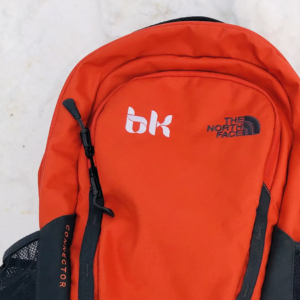Leggo My Logo
It’s always said that “imitation is the most sincere form of flattery,” which is how you can tell that Jim really does like Dwight. But when it comes to design, you have to be careful just how closely you imitate… And taking someone else’s work, claiming it as your own, and then selling it is a far cry either imitation or flattery.
That is what’s going on over at LogoGarden.com, which claims to offer “more than 10,000 new symbols” designed by the owner himself, or hand-picked by world-class logo designers. Unfortunately, that’s not the whole story. The site does feature more than 10,000 symbols, and sure, some of them may have been designed by the owner, but more and more people are discovering that many of them have been hand-picked FROM the portfolios of world-class designers, not BY them.
In the picture above, the circled logo on the left is one of the many you can find on LogoGarden.com. It’s listed only as donkey, and bears a striking resemblemce to the donkey logo of the Democratic Party. As it turns out, that was the point… originally. The image on the right is a clipping from the book LogoLounge 5, and shows sketches and ideas for an iPhone app logo. The app was for the New York Times, and the idea was to give each section a distinct icon, easily differentiating them visually in a small format. The design was done by Felix Sockwell, and while the final logo for the Politics section was a stylized Capitol building (thin red circle), the donkey, actually a combination of the Democratic donkey and the Republican elephant, was one of their scrapped ideas.
Now the practice of recycling unused logo ideas for another project is nothing new in the design world. When you spend the time to design something, your first inclination isn’t to throw it away if it doesn’t get picked. More often than not, the idea will get saved and used/modified to work with another project or client. But unless the people at Felix Sockwell decided to throw it up on LogoGarden, someone there simply copied it, added a star, and called it new.
That logo, while it was obviously swiped, wasn’t actually used. Amazingly, LogoGarden also features some logos that are incredibly famous and well recognized… world-wide. Search for “bear,” and one of the logos on the first page is one you may know.

See it there in blue? It’s (almost exactly) the logo of the World Wildlife Fund, but now he has eyes, and some of his lines are altered. Now most people wouldn’t be clueless enough to pay for that logo, as they’d ultimately recognize it, but according to a post by Bill Gardner, there are at least 7 other logos on this page alone that have been stolen and very slightly altered. And this is just one page out of thousands.
So to all you designers, established or starting out, while theirs nothing wrong with drawing inspiration from someone’s work, copying it and claiming it as your own is wrong, and it undermines what we do as a profession.
And to all the companies out there that are, have been, or will be in the market for a new logo: do it right. Your logo is important; it’s how customers and consumers will recognize and associate with you. It’s going to be on everything you do. As such, it’s worth an investment. Sure $79 might sound like a great deal on a logo for your business, but you get what you pay for. Custom logos are more expensive because designers spend time talking to you and figuring out what you want, what your company or brand really is, what it really means, and the perfect way to represent it. When you pay next to nothing for a “stock” logo, you’re not going to get the fit you need between your logo and you and, as this proves, you may simply be paying for a mark that’s already in use.
I could go on for a while about this, but I’ll save you all any more of my rant. Thanks for reading.
Other Articles
Navigating the Off-Season: Marketing Strategies for Outdoor, Overlanding, and Camping Brands
The world of outdoor adventure, overlanding, and camping is fueled by the passion for exploration, nature, and the thrill of...
Mastering Black Friday Cyber Monday Campaigns: Strategies for Outdoor Retail Brands
Black Friday Cyber Monday (BFCM) has become a pivotal period for businesses across various industries, and the outdoor retail sector...
Why Outdoor Retailers Must Plan Black Friday Cyber Monday Campaigns Well in Advance
For online retailers in the outdoor industry, the Black Friday Cyber Monday (BFCM) weekend represents a significant sales opportunity. However,...



